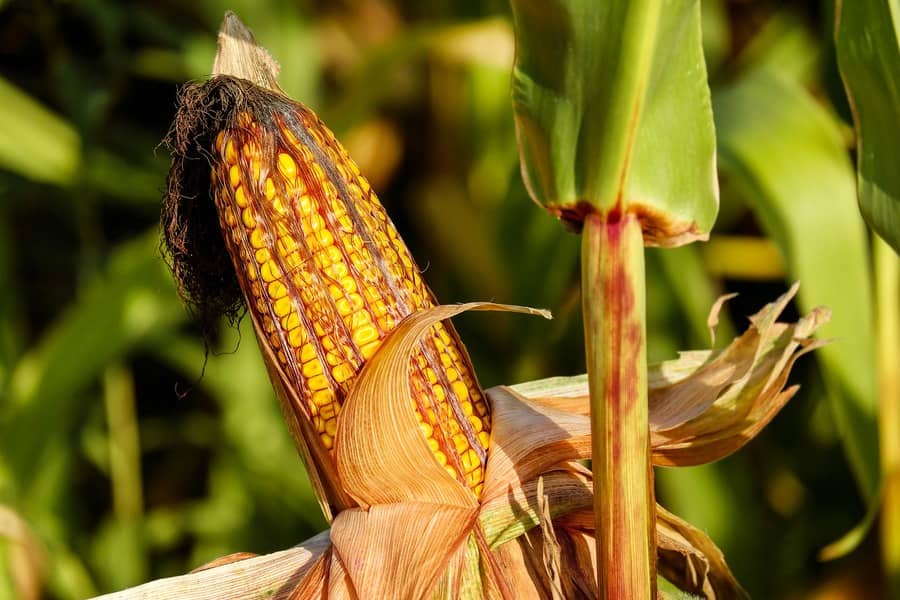Porto Alegre, January 10, 2022 – Production losses always generate normal speculative movements and make markets try to price a new balance between supply and demand. The losses of the 2021 second crop led the market to seek the repurchase of export and import positions, actions that allowed some control of domestic prices at the end of the year. However, the 2022 summer crop losses raise some additional concerns over the lack of viable alternatives so far. Exports do not exist in the first half of the year to offer reversal alternatives for the domestic market. Importing is unfeasible and expensive. External prices would need to fall to make imports viable. The big ‘positive’ point for the supply of the first semester is planting the second crop earlier than normal, which will allow the harvest in June/July. Until then, domestic supply adjusted, difficult and with high prices.
The first point that most of the domestic market ignored was the strong volume of exports for November through January. The domestic market seems to have been too conditioned to see growers pressing sales in January to release warehouses. We should remember that in our last issues we have stressed that this sales pressure had already occurred in October and November and would not be repeated in January. Well, we are in January with some old-crop supply, but without additional selling pressure.
The second point is that most of the selling pressure in October and November ended up being aimed at exports. So, instead of exports having discreet numbers in the last quarter of the business year, they ended up growing, and perhaps January closes above 2.5 mln tons.
At the same time, domestic price lows at the end of the year slowed the interest in importing both Argentine and Paraguayan corn. The market bet on the good progress of the summer crop through October and the apparent decline in exports as a potential indicator of price slowdown. However, exports advanced absorbing the isolated surpluses, and crop losses emerged. In the meantime, Argentina closed export registrations, and purchases from Brazil came to a standstill, with arrivals in Brazil ending in December. Today, even if registrations in Argentina reopen, Argentine corn would cost between BRL 106/108 CIF Brazilian port + internalization. It does not matter whether the government will extend the PIS/Cofins exemption for imports, as they are already unfeasible even without the tax.
The summer crop losses arose with the decrease in rainfall in Rio Grande do Sul in early November. What ended up leaving the consumer market powerless was the weather forecast, which had pointed to rains which were not confirmed, bringing losses. The damage in Rio Grande do Sul is more significant than in 2021 as it affected most of the state. In Santa Catarina, later crops in the west and north will bring losses. In southwestern Paraná, losses will appear at harvest, in March and April.
This combination of rising exports, very low carryover stocks, and production losses in the summer crop, besides the low position of stocks held by the consumer sector, supports the resumption of corn highs.
The rains for the last 10 days were quite beneficial to the later crops in the center-east of Paraná and Santa Catarina and the Vacaria region. In sections of southwestern Paraná and central Santa Catarina, the rains arrived late, and losses are already in progress. In these late planting regions, the harvest only starts from March.
In other regions of the country, corn crops have performed very well, with good productivity potential, with the harvest starting in March. In the coming few weeks, the priority will be soybeans. It is naive to imagine that a normal crop in the Southeast region will offset the South production losses with corn, much less with soybeans.
Thus, the harvest will advance in January in the west of the South region, followed by an interval of slower harvest pace, and then the greatest volume reaching the market from March. In the Southeast, most crops will be reaped from March. Therefore, the harvest will occur in isolated places only in the first quarter of the year.
The 2022 second crop has been ‘positively’ affected by the production losses of the summer soybean crop. Paraguay, western and northwestern Paraná, and the far south of Mato Grosso do Sul have started reaping soybeans earlier than normal or giving up the harvest due to total losses, which allows second-crop corn to be reaped 20 days before normal. Many growers must start planting already in this second week of January. Many have not done it yet because it has not rained yet. So, despite a better planting window, the drought scenario requires rain in the next few days so that the corn second crop can have a good start without additional losses.
In Argentina the picture is also critical. High temperatures and only spotty rains begin to suggest lower production numbers, and if the rains do not return in the next 30 days, the situation may become as serious as in Paraná.
The domestic market, in general, begins to show this change in the supply profile, at least until May. Exchange rate and foreign prices may bring some moderation via imports, but only after April. In any case, the domestic market now begins to see some normalization of supply in June and July, since, despite the earlier planting of the second crop, there will be no harvest in May coming from the second crop.
Agência SAFRAS Latam
Copyright 2022 – Grupo CMA

